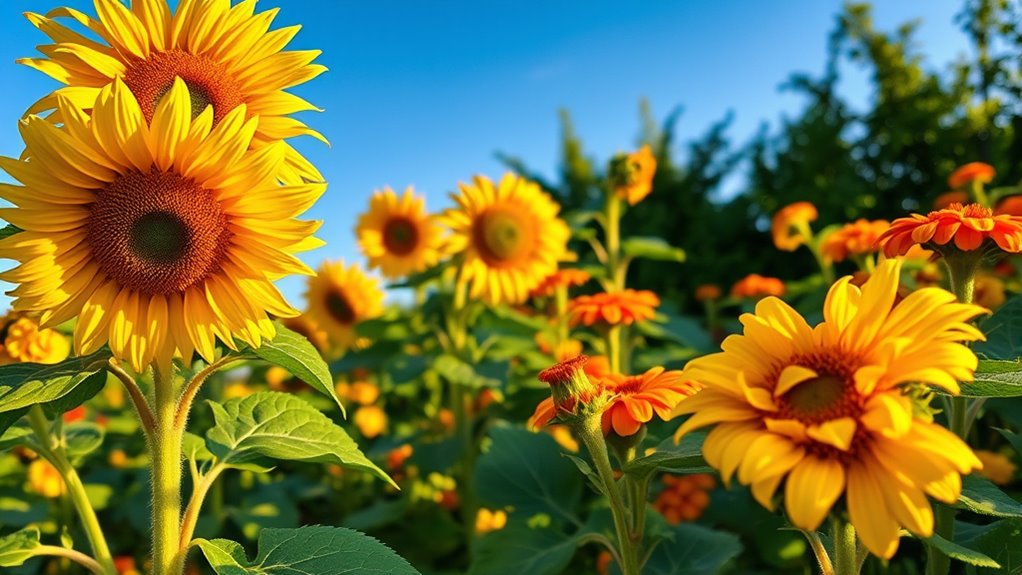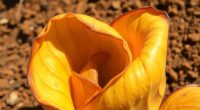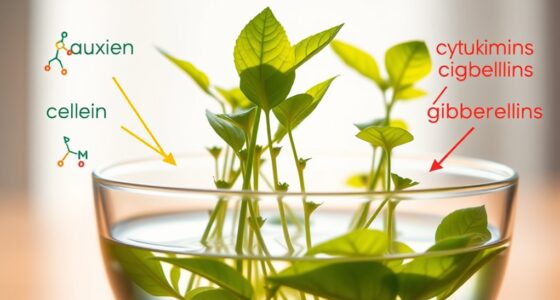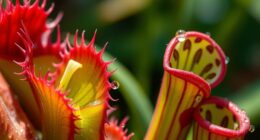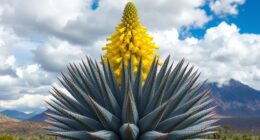Long summer days send signals to plants through their light receptors, activating responses like flowering or entering dormancy. When days are extended, these internal clocks interpret the increased daylight as a cue to start processes that ensure reproductive success or survival. Photoreceptors detect changes in light, triggering hormonal shifts that direct these behaviors. To discover how plants finely tune their responses to seasonal changes, keep exploring the fascinating ways nature adapts.
Key Takeaways
- Long summer days increase light exposure, activating photoreceptors that signal plants to initiate flowering or dormancy.
- Extended daylight promotes flowering in long-day plants by triggering flowering genes through internal hormonal pathways.
- In short-day plants, decreasing day length in summer prevents flowering, ensuring reproductive timing aligns with seasonal conditions.
- Increased daylight influences hormonal shifts, such as changes in auxin and gibberellins, that regulate plant growth and development.
- Light perception during long summer days helps plants adapt by coordinating flowering and dormancy cycles for optimal survival.

Many plants and animals rely on changes in day length to time their biological activities, a phenomenon known as photoperiodism. As summer approaches and days grow longer, you’ll notice many plants respond by activating specific processes, such as flowering or entering dormancy. This internal clock helps guarantee that these organisms are active at ideal times, increasing their chances of survival and reproduction.
In plants, the increase in daylight acts as a signal for flowering triggers. When days reach a certain length, it prompts the plant to produce floral buds, initiating the flowering process. This timing is essential because flowering too early or too late could reduce pollination success. Photoreceptors within the plant detect the change in light and send signals to the plant’s internal mechanisms, activating genes responsible for flowering. Whether a plant is a long-day or short-day species depends on how it interprets the length of daylight. Long-day plants, like spinach and lettuce, require extended daylight hours to flower, while short-day plants, such as chrysanthemums and poinsettias, flower when days shorten. These responses guarantee that flowering happens during the most favorable conditions, often aligned with seasonal pollinator activity and ideal climate.
At the same time, photoperiodism influences dormancy regulation. As days lengthen in summer, some plants enter a period of dormancy, especially those adapted to seasonal climates. This dormancy isn’t necessarily a sign of decline but a strategic pause to survive adverse conditions like winter. The change in light triggers hormonal shifts within the plant, leading to the development of dormancy. During this period, growth slows or stops, conserving energy until conditions become suitable again. When days start shortening in late summer or fall, the plant perceives this as a signal to break dormancy, resuming growth in time for spring. This cycle of dormancy regulation, controlled by photoperiod, helps plants avoid damage from extreme weather and prepares them for future growth cycles. Additionally, the presence of photoreceptors that detect light changes underscores the importance of light perception in plant survival strategies.
Your understanding of photoperiodism reveals how plants intricately interpret environmental cues to time their responses perfectly. From flowering triggers that guarantee successful reproduction to dormancy regulation that guards against harsh conditions, these mechanisms demonstrate nature’s remarkable adaptability. As you observe the changing seasons, recognize that the length of daylight is more than just a measure of time—it’s a essential signal guiding plant behavior and survival strategies in the natural world.
Frequently Asked Questions
How Does Photoperiodism Vary Among Different Plant Species?
You’ll notice that photoperiodism varies among plant species, influencing flowering diversity and regional adaptations. Some plants are short-day, needing longer nights to flower, while others are long-day, requiring extended daylight. Day-neutral plants aren’t affected by day length. These differences help plants adapt to their environments, ensuring they bloom at ideal times and thrive across diverse regions. Your understanding of this variation highlights nature’s remarkable adaptability.
Can Artificial Light Manipulation Influence Plant Flowering Times?
You can influence plant flowering times through artificial light manipulation, but beware of light pollution and urban lighting. These sources can disrupt natural photoperiod cues, causing plants to flower prematurely or delay flowering. By controlling artificial light exposure—using timers or blackout curtains—you can extend or shorten day lengths, effectively triggering flowering at desired times. Just remember, excessive artificial lighting might interfere with plants’ natural responses and harm local ecosystems.
What Molecular Mechanisms Detect Day Length Changes in Plants?
Ever wondered how plants sense changing day lengths? You see, they use molecular mechanisms like cryptochrome signaling and phytochrome regulation to detect light duration. These photoreceptors respond to specific light wavelengths, triggering pathways that influence flowering and growth. As day length varies, cryptochromes and phytochromes adjust gene expression, ensuring plants adapt appropriately. This sophisticated system allows plants to interpret environmental cues and react accordingly, ensuring their survival and reproduction.
How Do Climate Change and Shifting Seasons Affect Photoperiodic Responses?
Climate change and shifting seasons can disrupt your understanding of seasonal cues like urban heat and seasonal migration. As temperatures rise and seasons blur, plants may misinterpret day length signals, leading to altered flowering times or growth patterns. You might notice earlier blooms or delayed migrations, which can upset ecosystems. These changes challenge the traditional photoperiodic responses, making it harder for plants and animals to adapt to new environmental conditions caused by climate shifts.
Are There Agricultural Practices That Optimize Photoperiodic Triggering?
You can enhance photoperiodic triggering through strategic agricultural practices like seasonal planting and light management. By timing planting schedules to match natural light cycles or using artificial lighting, you encourage desired plant responses such as flowering or fruiting. Adjusting light exposure helps control growth phases, ensuring crops develop ideally. These methods improve yields and quality, adapting to changing conditions and making your farming more efficient and sustainable.
Conclusion
Now that you see how summer days influence plant responses, you understand the power of light in nature’s rhythm. By recognizing photoperiodism, you appreciate how plants “know when to grow and when to rest.” Remember, nature’s timing is everything—just as the early bird catches the worm, plants rely on day length to thrive. Keep observing, and you’ll discover the incredible ways light shapes life around you.

